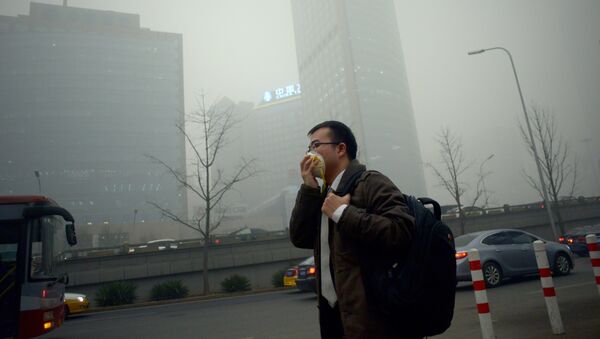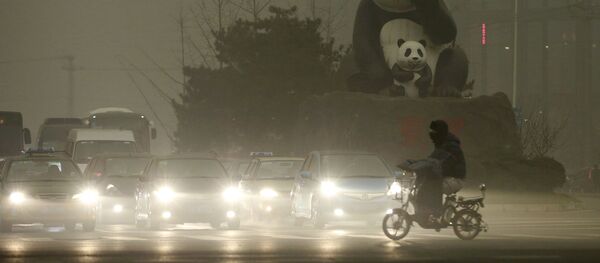Air quality has been worsening since Thursday when officials announced the blue pollution alert level. On Friday it was raised to the more severe yellow. The most severe warning of the four color-coded levels, red alerts, were issued by Chinese officials earlier in December. Fewer cars on the road and the closure of schools and some industrial plants followed the announcement.
China introduced a four-tier air pollution warning system in 2013. Accordingly, a red alert can be issued when heavy smog lasts for more than three days, an orange alert for three days of smog, a yellow for two, and a blue for one.
Friday noon, the air quality index readings increased to 500, a dangerous number given scientists have deemed anything above 300 as "hazardous." These figures say that polluted smog reaching 500 can damage lungs and affect bloodstream.
Outdoor activities could provoke "serious aggravation of heart or lung disease and premature mortality in persons with cardiopulmonary disease and the elderly; serious risk of respiratory effects in general population."
China's extended use of coal for power generation has caused Beijing, as well as other cities, to be inundated with tiny PM 2.5 pollutant particles, name as such because they measure less than 2.5 micrometers in width. The particles can penetrate deep into the lungs and cause asthma and bronchitis and exacerbate other acute respiratory diseases, leading to premature death.
Roughly 50 cities in N & E China issue air pollution alerts in most recent bout of smog https://t.co/ldRAfs5Mrk pic.twitter.com/6bCHYjT24X
— China Xinhua News (@XHNews) December 23, 2015
A heavy dependence on fossil fuels that China has been struggling to reduce was cited as the main cause of the pollution dilemma the country has experienced for years.



